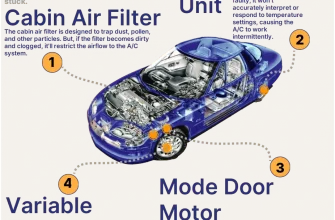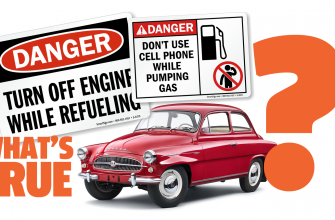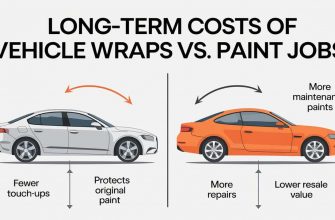In the ever-evolving landscape of automotive safety, airbags have become a critical component in protecting passengers during collisions․ This article explores the timeline of airbag mandates in vehicles, highlighting key milestones that have shaped vehicle safety standards worldwide․
1970s: The Dawn of Airbag Technology
The concept of airbags dates back to the 1950s, but it wasn’t until the 1970s that the technology began to gain traction․ In 1973, General Motors introduced the first commercial airbag system in its 1974 models․ This early system was designed more as a luxury feature than a standard safety measure․
1980s: Initial Regulations and Testing
During the 1980s, the National Highway Traffic Safety Administration (NHTSA) in the United States began to recognize the importance of airbags․ In 1984, the NHTSA initiated testing and evaluation of airbag systems, leading to the establishment of performance standards․ By the end of the decade, manufacturers were encouraged to incorporate airbags into their designs․
1990s: The First Mandates
The real turning point came in the early 1990s․ In 1991, the NHTSA mandated airbags in all passenger vehicles sold in the U․S․ starting with the 1998 model year․ This regulation aimed to reduce fatalities and injuries in frontal collisions․ As a result, automakers scrambled to equip their vehicles with airbags, marking a significant shift in vehicle safety standards․
2000s: Expanding Airbag Regulations
By the early 2000s, airbags became a standard feature in most vehicles globally․ The NHTSA expanded its regulations to include side-impact airbags, which were mandated in 2006 for all new vehicles․ This decade also saw advancements in airbag technology, including the introduction of curtain airbags, which provide additional protection for passengers in side collisions․
2010s: Global Adoption and Enhanced Standards
The 2010s marked a period of widespread global adoption of airbag mandates․ The European Union followed suit with its own regulations, requiring airbags in new vehicles․ The NHTSA also introduced new testing protocols, emphasizing the importance of crashworthiness and occupant protection․
2020s: Current Trends and Future Directions
As we move further into the 2020s, the automotive industry is witnessing a shift towards advanced safety technologies, including adaptive airbags and integration with vehicle-to-vehicle communication systems․ Current mandates continue to evolve, addressing not only frontal and side impacts but also pedestrian protection and occupant detection systems․
The timeline of airbag mandates reflects a significant evolution in automotive safety․ From their early beginnings to their current status as a standard feature, airbags have played a crucial role in reducing injuries and saving lives․ As technology advances, we can expect further enhancements in airbag systems, ensuring that vehicle safety continues to improve․









This exploration of airbag mandates is incredibly well-researched. It’s crucial that we continue to prioritize advancements in automotive safety!
Great read! The milestones mentioned in the article really showcase how crucial airbags have become over the decades. Safety should always come first!
The transition from luxury feature to a standard safety measure is remarkable. This article does an excellent job of capturing that shift!
I really appreciated the detailed timeline presented in this article. Understanding the regulations behind airbags helps highlight their importance in vehicle safety.
This article provides an insightful overview of the history and evolution of airbags. It’s fascinating to see how far we’ve come in automotive safety!
I found this article both informative and engaging. It’s impressive to see how technology has advanced airbag systems for better protection.